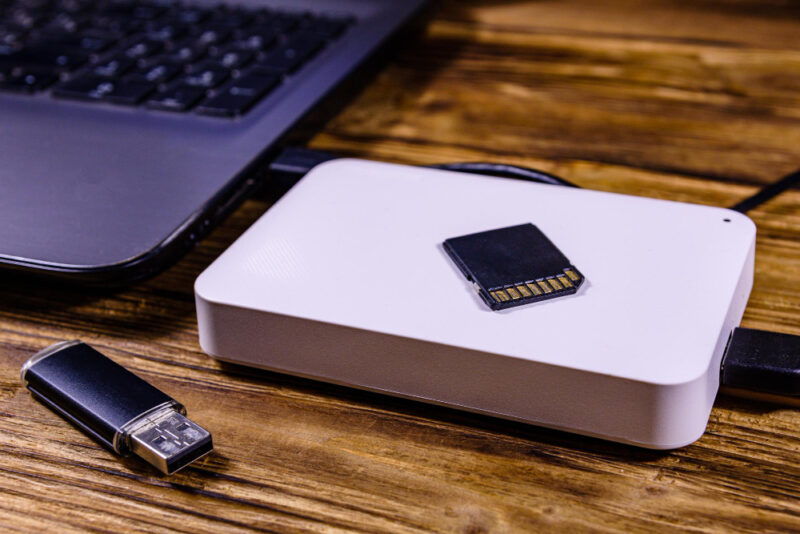Data archiving has become more crucial in today’s digital world. With the exponential growth of data, businesses, educational institutions, and even individuals are constantly seeking efficient ways to store and archive important information. Flash duplicators have emerged as a powerful tool in this landscape, offering a quick and reliable method for mass data storage on flash-based media. They streamline the process of transferring large volumes of data to multiple devices, significantly reducing time and effort. This technology is particularly beneficial when time-sensitive or large-scale data preservation is necessary.
Understanding Flash Memory Duplicators
A flash memory duplicator is a device designed to copy data from one flash memory source, like a USB drive or SD card, to multiple flash memory devices simultaneously. These duplicators are known for their high-speed data transfer capabilities, making them ideal for creating multiple backups quickly and efficiently. They come in various sizes and capacities, catering to unique needs – from small, portable models for personal use to larger, more robust units for industrial applications. The ease of use and reliability of these devices make them a popular choice for a wide range of data archiving needs.
Why Choose Flash Memory for Archiving?
Flash memory devices, such as USB drives and SD cards, are popular for archiving due to their durability, portability, and capacity. Unlike traditional hard drives, they have no moving parts, which reduces the risk of mechanical failure. They are also compact, making storing large amounts of data in a physically small space easy. Additionally, flash memory is less susceptible to environmental factors like magnetic fields and temperature extremes, making it a more stable choice for long-term data storage. Their growing capacities and decreasing costs also contribute to their appeal for archiving purposes.
Selecting the Right Flash Memory Duplicator
Choosing the appropriate flash memory cloning device depends on several factors:
- Capacity Needs: Determine the volume of data and number of copies required.
- Speed Requirements: Consider the speed at which you need to duplicate data.
- Compatibility: Ensure the duplicator supports all the flash memory formats you use.
- Advanced Features: Look for features like data verification and error checking for reliability.
These factors are essential to ensure that the chosen duplicator aligns with specific archiving needs for personal or professional use. Furthermore, factors like the build quality of the duplicator and after-sales support provided by the manufacturer are also vital considerations that can affect the overall efficiency and longevity of the device.
Setting Up Your Flash Memory Duplicator
Setting up a flash memory cloning device is typically straightforward:
- Insert the Master Flash Drive: Load the data to be archived onto a master flash drive.
- Insert Target Drives: Place blank flash drives in the duplicator’s slots.
- Initiate the Duplication Process: Start via the device’s interface, which often involves just a button press.
It’s critical to ensure the master flash drive is free from corrupt files or viruses to prevent spreading them to the target drives. Additionally, checking the format and partition style of the master drive is important to ensure compatibility with the target drives, especially when dealing with different operating systems or devices.
Efficient Archiving Strategies Using Flash Memory Cloning Devices
To maximize efficiency when using a flash memory cloning device for archiving, consider the following strategies:
- Organize Data Methodically: Pre-organize the data on the master drive to simplify retrieval from the duplicates.
- Regularly Update Archives: Periodically update your archives to include new or altered data.
- Label Your Drives: Clearly label each flash drive with relevant information for easy identification.
These strategies enhance the speed of the archiving process and ensure that the archived data remains organized and easy to access in the future. Keeping a detailed log of the archiving process, including dates and contents of each drive, can also be beneficial for tracking and managing the archived data over time.
Maintaining Data Integrity in the Archiving Process
Ensuring the integrity of your data during the duplication process is paramount:
- Verify Copies: Use duplicators with data verification features to ensure accuracy.
- Handle with Care: Flash drives are durable but should be handled gently to avoid data corruption.
- Test Regularly: Periodically test your archived data to ensure it remains accessible and intact.
In addition to these steps, it’s also advisable to use high-quality flash drives for archiving, as they are less likely to fail and can better preserve data over long periods. Employing a systematic approach to archiving, such as creating backups in multiple locations, further safeguards the data against potential loss or damage.
The Role of Flash Memory Duplicators in Large-Scale Archiving
In large-scale operations, flash memory cloning devices serve as a linchpin for efficient archiving. They enable quick replication of data for distribution or backup, reducing the time and manpower required for manual copying. This is particularly advantageous in sectors with large data turnover, like digital media, research, and archiving libraries. In such settings, the duplicators speed up the process and reduce the risk of human error, ensuring consistent and reliable copies every time.
Advanced Features to Enhance Archiving
Advanced flash memory duplicators come equipped with features that can greatly enhance the archiving process:
- Multi-Format Support: Some duplicators support various types of flash memory, increasing versatility.
- Data Encryption: For sensitive data, encryption capabilities offer additional security.
- Partitioning Tools: These allow for more organized and efficient use of storage space on each device.
Moreover, some advanced models offer network connectivity, allowing for remote management of the duplication process, which is particularly useful in larger organizations where centralized control of data archiving is necessary.
Conclusion:
In conclusion, flash duplicators are an invaluable asset in data archiving. They offer a blend of speed, efficiency, and reliability that is hard to match with other data storage methods. By understanding how to effectively utilize these tools, organizations and individuals can significantly streamline their data archiving processes, ensuring their valuable information is securely backed up and easily accessible for years to come.









